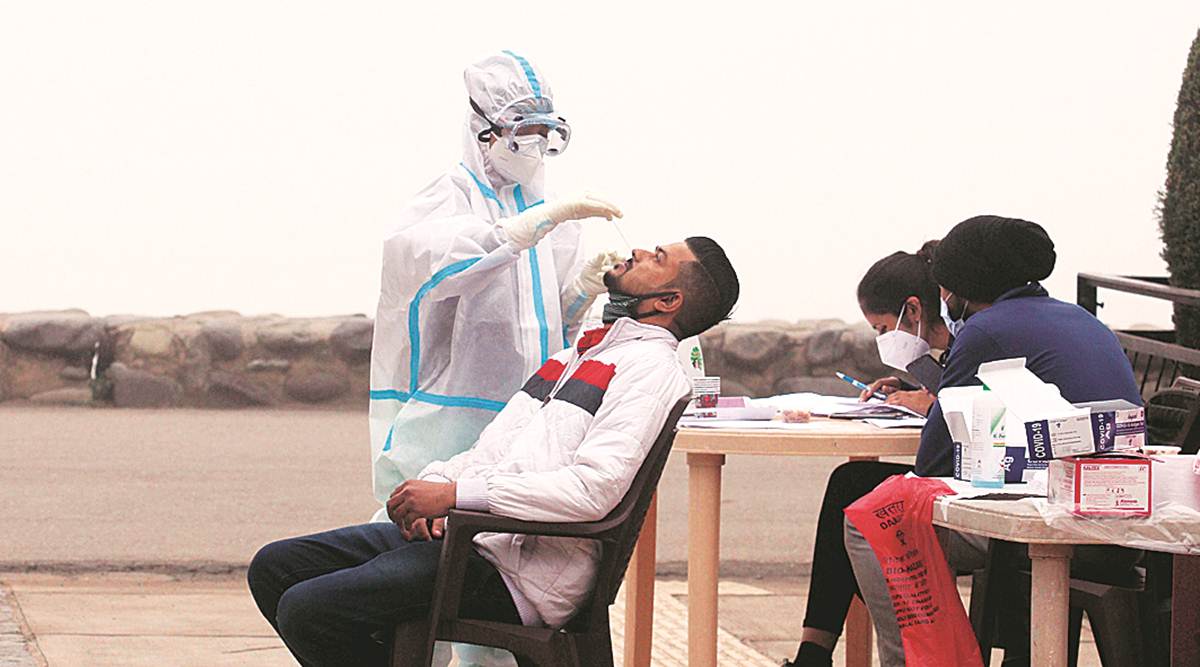
Updated: December 14, 2020 8:02:02 am
 At a screening center in Hyderabad on Sunday. (PTI)
At a screening center in Hyderabad on Sunday. (PTI)
Since new Covid-19 infections have apparently stabilized for more than a month, experts believe that a larger proportion of the Indian population may already have been infected by the virus than serological surveys indicate.
For more than a month and a half, reported cases of the infection have dropped to less than 50,000 a day. During this time, there have been festivals, elections, farmers protestsand relaxations in restrictions.
All this was feared to lead to an increase in the number of infected people. But not only has there been no increase, the numbers have been declining, slowly but steadily. Over the past two weeks, the daily detection of new cases has remained firmly below 40,000. Follow Live Coronavirus India Updates
The largest number of cases continues to come from Kerala and Maharashtra, each of which reports between 4,000 and 5,000 cases a day, while a state like Bihar, where the numbers were expected to rise due to elections and Chhath, has been reporting just 500 to 600 cases. one day.
Experts say the only logical way to explain this could be that a much larger proportion of the population than we currently know, may be even more than half of the country’s total population, may already be infected.
“In fact, the predictions from a computer model that we have developed actually tell us this. As of Saturday, this model has been suggesting that about 55 percent of the Indian population may have been infected, ”said Manindra Agarwal from IIT Kanpur. “Now none of the serosurveys are capturing such large numbers for disease prevalence. And we don’t know what the reason could be “
Agarwal was part of a government-appointed committee that had developed a “supermodel” to map the trajectory of the disease in India. By mid-October, this committee had published the findings of its modeling exercise and said that the epidemic had already “peaked” in India and would likely run its course in February next year.
Shahid Jameel, a virologist and director of the Trivedi School of Biosciences at Ashoka University, agrees that the actual prevalence of the disease may be much higher than serosurveys have been able to capture.
“The latest national sero-survey showed that the actual prevalence of the disease could be 15 to 16 times higher than that of confirmed cases. With 10 million confirmed cases now, it would mean that around 150 to 160 million could have been infected. But the outbreak may have moved faster than we have been able to record. So it could be that instead of 150 to 160 million people, 400 or 500 million have been infected. I think this is a good time to request another comprehensive sero-survey, ”said Jameel.
“Another possibility for which we again have no evidence is that the virus could have lost some of its virulence due to this increasing number of exposures. This happens with viruses, but it is generally driven by vaccines, “he said.
Agarwal also offers a possible explanation for the low numbers in Bihar and the recent third wave in Delhi.
“Our model shows that the prevalence of the disease in Bihar has reached 65%. In fact, for every confirmed case of infection, there may be 300 that go unreported. This ratio is the highest in Bihar. Now, if that’s true, it could explain why Bihar reports only about 500 cases a day, ”he said.
In Delhi, Agarwal said, the model showed that for every confirmed case, about 40 cases went unreported. “Around the time that Delhi had been reporting very high numbers a few weeks ago, we found that this ratio had changed to about one in 20. And what we found during this time is that Delhi had changed its testing strategy. It made testing free and removed restrictions on who could be tested. As a result, many people who had even mild symptoms went ahead and got tested. And that led to an increase in the number of reported cases. The third wave in Delhi was not a real increase in the spread of the disease, but more likely just a consequence of a change in testing policy, “he said.
.
 The Indian Express is now on Telegram. Click here to join our channel (@indianexpress) and stay up to date with the latest headlines
The Indian Express is now on Telegram. Click here to join our channel (@indianexpress) and stay up to date with the latest headlines